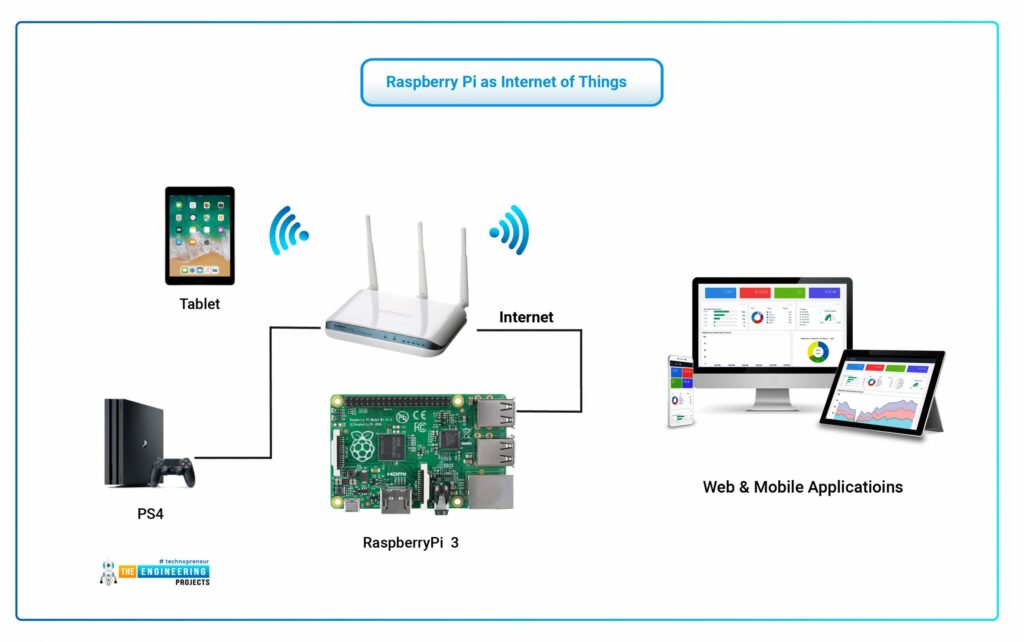Unleashing the Power of Raspberry Pi in IoT Projects: A Comprehensive Guide

Introduction: Raspberry Pi has revolutionized the world of IoT (Internet of Things) by providing an affordable, versatile, and easy-to-use platform for building connected devices and applications. With its compact size, powerful processing capabilities, and rich ecosystem of hardware and software, Raspberry Pi has become the go-to choice for hobbyists, educators, and professionals alike to create innovative IoT solutions. In this comprehensive guide, we’ll explore the myriad possibilities of using Raspberry Pi for IoT projects, covering everything from setup and programming to building real-world applications and integrating with cloud services.
Section 1: Introduction to Raspberry Pi and IoT 1.1 Overview of Raspberry Pi: Raspberry Pi is a series of small, single-board computers developed by the Raspberry Pi Foundation. These credit card-sized computers are equipped with powerful processors, GPIO (General Purpose Input/Output) pins, USB ports, HDMI output, and networking capabilities, making them ideal for a wide range of computing tasks, including IoT applications.
1.2 Understanding IoT: IoT refers to the network of interconnected devices that communicate and exchange data over the internet. These devices, often equipped with sensors and actuators, can collect data from the environment, process it locally or in the cloud, and take actions based on predefined rules or algorithms. IoT enables the creation of smart, connected systems that can monitor, control, and automate various aspects of our lives.
Section 2: Getting Started with Raspberry Pi for IoT 2.1 Setting Up Raspberry Pi: The first step in using Raspberry Pi for IoT projects is to set up the hardware and software. This involves installing the operating system (typically Raspbian or Raspberry Pi OS) onto an SD card, connecting peripherals such as a keyboard, mouse, and monitor, and booting up the Raspberry Pi. Once booted, users can configure the system settings and connect to the internet via Ethernet or Wi-Fi.
2.2 Exploring GPIO Pins: GPIO pins allow Raspberry Pi to interact with the physical world by connecting to sensors, actuators, and other electronic components. Users can control and read the state of GPIO pins using programming languages such as Python or C/C++. Understanding GPIO pins is essential for building IoT projects that involve sensing and controlling external devices.
Section 3: Programming Raspberry Pi for IoT Projects 3.1 Python Programming: Python is the preferred programming language for Raspberry Pi development due to its simplicity, readability, and extensive libraries for IoT development. Users can write Python scripts to interface with sensors, process data, and communicate with cloud services. Python’s versatility makes it well-suited for a wide range of IoT applications, from home automation to environmental monitoring.
3.2 Using Sensors and Actuators: Raspberry Pi can interface with a variety of sensors and actuators, including temperature sensors, motion sensors, light sensors, relays, motors, and more. By connecting these components to GPIO pins, users can collect data from the environment, monitor changes, and take actions based on sensor readings. This opens up endless possibilities for IoT projects, such as weather stations, smart home devices, and automation systems.
Section 4: Building Real-World IoT Applications 4.1 Home Automation: One of the most popular applications of Raspberry Pi in IoT is home automation. With Raspberry Pi and sensors/actuators, users can build smart home systems to control lighting, heating, security cameras, and appliances remotely. By integrating with voice assistants like Amazon Alexa or Google Assistant, users can voice-control their smart home devices for added convenience.
4.2 Environmental Monitoring: Raspberry Pi can be used to build environmental monitoring systems for tracking temperature, humidity, air quality, and more. By deploying sensor nodes in various locations, users can collect real-time data and visualize it on web dashboards or mobile apps. Environmental monitoring systems built with Raspberry Pi can be used for home, office, agriculture, and industrial applications.
Section 5: Integrating with Cloud Services 5.1 Data Logging and Analysis: Raspberry Pi can connect to cloud platforms such as AWS (Amazon Web Services), Azure, or Google Cloud for data logging and analysis. By sending sensor data to the cloud, users can store, analyze, and visualize large datasets using cloud-based tools and services. This allows for scalable IoT solutions with advanced analytics capabilities.
5.2 Remote Monitoring and Control: Cloud integration enables remote monitoring and control of Raspberry Pi-based IoT devices from anywhere in the world. Users can access their devices via web interfaces or mobile apps, monitor their status, and remotely control them using commands or triggers. Cloud-based IoT platforms provide secure and reliable connectivity for managing distributed IoT deployments.
Section 6: Security and Privacy Considerations 6.1 Securing IoT Devices: Security is a critical aspect of IoT projects, as connected devices are vulnerable to cyber attacks and data breaches. Users should follow best practices for securing Raspberry Pi devices, such as changing default passwords, keeping software up to date, and implementing encryption and access controls. Additionally, users should be aware of potential security risks and design their IoT solutions with security in mind.
6.2 Protecting User Privacy: Privacy is another important consideration in IoT projects, as devices may collect sensitive data from users. Users should be transparent about the data collected by their IoT devices, obtain user consent for data collection and processing, and implement privacy-preserving measures such as anonymization and data minimization. By prioritizing security and privacy, users can build trust with their customers and ensure the responsible use of IoT technologies.
Conclusion: Raspberry Pi is a versatile platform for building IoT projects that empower users to connect, monitor, and control the world around them. By leveraging Raspberry Pi’s capabilities and the wealth of resources available in the Raspberry Pi community, users can unleash their creativity and bring their IoT ideas to life. Whether building smart home systems, environmental monitoring solutions, or industrial automation applications, Raspberry Pi offers endless possibilities for innovation and exploration in the exciting world of IoT.






